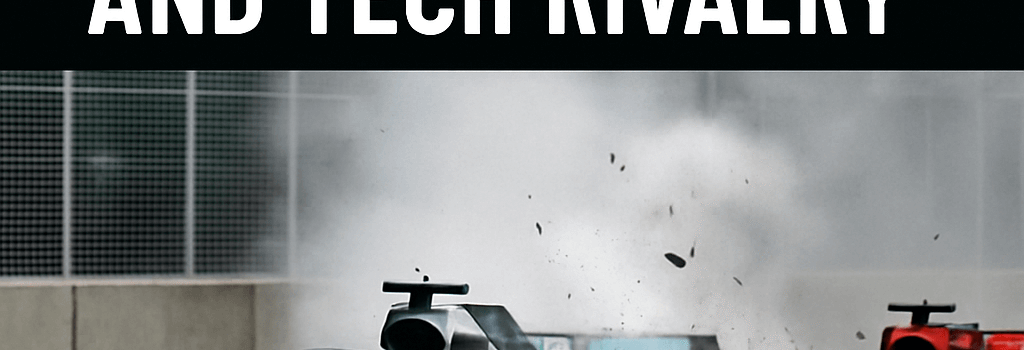F1 Canada 2025: Crash Predictions and Tech Rivalry

Amid record crowds at Montreal’s Circuit Gilles-Villeneuve, the 2025 Canadian Grand Prix delivered both spectacle and friction. While George Russell secured Mercedes’ maiden win of the season, an intra-team collision between McLaren teammates Lando Norris and Oscar Piastri was the headline everyone saw coming. Here, we dissect not only the on-track drama but the technical intricacies, strategic gambits, and off-track rivalries shaping the championship fight.
Historic Venue Under the Microscope
The 4.361-kilometre (2.71-mile) Circuit Gilles-Villeneuve sweeps around Île Notre-Dame, boasting 14 corners and two DRS zones. Originally forged from Montreal’s Expo 67 infrastructure and refined for the 1976 Olympics, the track demands low-downforce setups, heavy-braking stability, and peak traction out of slow-speed chicanes.
- Track profile: Average lap 94 seconds at 166 km/h.
- Surface: Asphalt overlay last repaved in 2023, offering moderate grip but high thermal variance.
- Technical demands: Rear wing at 7.5° angle, front wing endplate designed for vortex generation, brake-by-wire calibration essential for heavy loads at Turn 10.
Race Recap and Collision Analysis
Mercedes’ W15, fitted with revised cooling ducts and an upgraded hybrid unit delivering 55 kW from the MGU-K, capitalized on traction zones. Russell’s lights-to-flag victory was engineered via a one-stop strategy: starting on Pirelli C3 mediums and switching to C5 softs on Lap 28 to offset tire degradation in low-speed corners.
McLaren, running its MCL39B with new carbon-fiber sidepod inlets and enhanced energy-recovery software, could not muster the usual two- to three-tenths advantage. Oscar Piastri qualified P3 while Norris landed P7. On Lap 13, Norris misjudged a slipstream pass at Turn 1—his front-wing leading edge wedged into Piastri’s rear tire, sending him into the concrete barrier. The subsequent Safety Car neutralization cost both McLarens a likely top-five finish.
Aerodynamics and Tire Performance
Mercedes’ recent floor-edge modifications improved underfloor airflow by approximately 4%, as validated in a 50 percent-scale wind-tunnel. Pirelli’s C5 compound, reintroduced after 2010, employs thinner steel belts and a silica-infused rubber matrix to balance ultimate grip with predictable degradation. Data logs showed tire temperatures peaking at 95 °C through the Mistral Chicane, stressing lateral load capacity.
Strategic Pit Stops and Safety Car Timing
Teams ran Monte Carlo simulations for safety-car scenarios. Mercedes executed an undercut during the Virtual Safety Car—its pit-lane delta of 22.6 seconds versus the official 18.3 seconds guaranteed track position. Ferrari’s bold early stop for Charles Leclerc backfired when he struck a marmot at Turn 13, causing a puncture and hydraulic damage that ended his points charge.
Off-Track Rivalries and Regulatory Pressure
Max Verstappen enters the British GP with 11 penalty points—one more would trigger a one-race ban. Red Bull has prepared backup drivers for all four of its cars (two factory RBs and two junior team entries). After qualifying, Russell jibe-ed that he “still had spare points” on his Super License, prompting a rejected Red Bull protest claiming he encouraged Verstappen to breach safety-car rules.
“It’s a chess match off-track as much as on it,” said FIA Race Director Niels Wittich, underlining the complex regulatory landscape teams navigate.
The Italian press has also sharpened its critique of Scuderia Ferrari boss Frédéric Vasseur. Despite a €200 million annual budget and wind-tunnel upgrades, Ferrari remains 0.3 seconds off in qualifying trim. Four team principals in nine seasons have left Tifosi demanding the stability that powered the Todt-Brawn-Schumacher dynasty.
Future Outlook: Upgrades and Regulation Changes
As the paddock heads to Silverstone, teams will introduce 2025-spec power-unit components targeting a 5 percent increase in thermal efficiency. Mercedes plans to trial next-gen ERS battery cells—lithium–titanate chemistry with 20 percent higher discharge rates—while Red Bull finalizes a revised cylinder head to cut exhaust backpressure by 1.2 bar. Ferrari, meanwhile, refines its double-diffuser layout under looming 2026 aero restrictions.
- Power-unit evolution: Hybrid output boosted to 160 kW from 120 kW.
- Aerodynamic ceiling: 2026 regs limit DRS slot width to 25 mm.
- Safety enhancements: Revised debris fencing protocols post-Norris incident.
Key Technical Takeaways
- W15’s ERS efficiency improved by 10 percent with new battery cells.
- Pirelli’s next-gen C5 compound set for Silverstone debut.
- DRS zone realignment at Montreal to reduce slipstream advantage.
Conclusion
While this year’s Canadian GP may not enter the all-time classic pantheon, it underscored the rapid pace of F1 technology, the fine margins of pit-stop strategy, and the simmering tensions on and off track. As Europe beckons, both hardware development and psychological warfare will define the championship’s next chapter.